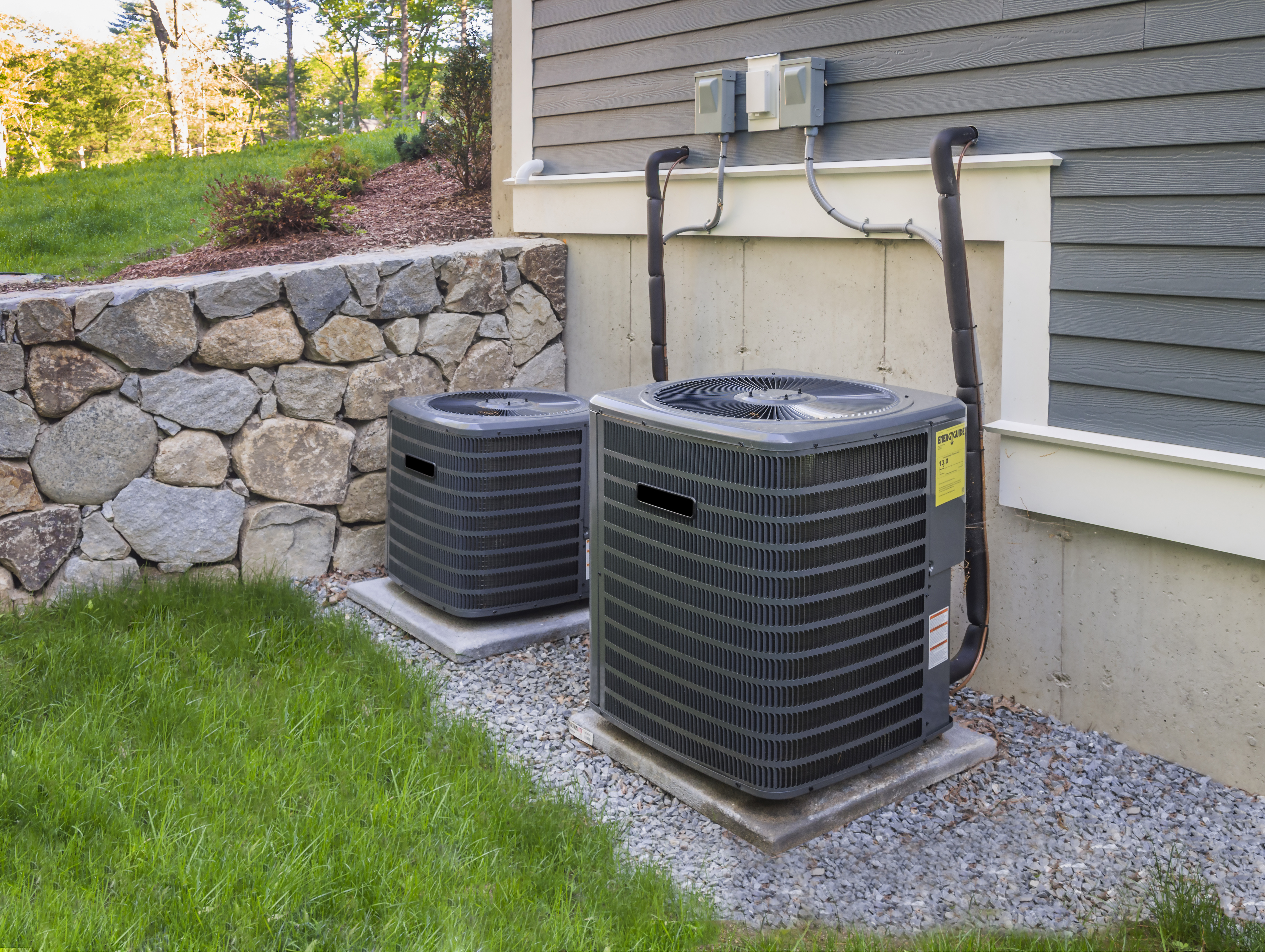 A functional HVAC system is easy to take for granted. It hums along in the background, barely noticeable, keeping your family comfortable. However, if something breaks, the importance of effective heating and cooling becomes obvious, especially as we approach more extreme temperatures, like in the summer months. When overseeing HVAC repairs, the homeowner’s most pressing question is whether to invest in an entirely new system, or to repair parts piecemeal, as needed. Let’s take a look at some basic things every homeowner should know about HVAC systems. This information can empower you to ask the right questions of your HVAC repairman.
A functional HVAC system is easy to take for granted. It hums along in the background, barely noticeable, keeping your family comfortable. However, if something breaks, the importance of effective heating and cooling becomes obvious, especially as we approach more extreme temperatures, like in the summer months. When overseeing HVAC repairs, the homeowner’s most pressing question is whether to invest in an entirely new system, or to repair parts piecemeal, as needed. Let’s take a look at some basic things every homeowner should know about HVAC systems. This information can empower you to ask the right questions of your HVAC repairman.
HVAC Systems: 5 Things to Know before Your HVAC is Serviced
1. Major Components of HVAC Systems.
Most HVAC components last 10 to 15 years. Heat pumps average a lifespan of 16 years. Air conditioners work for 10 to 15 years. Furnaces may hold out for 20 years, but many require replacement around the 15-year mark. Before total replacement, various HVAC components may fail. Let’s take a look at the basic components within an HVAC system:
- The Furnace. This large component is often housed in a basement, closet, or attic. It pushes hot or cold air into ducts, which deliver cooled or heated air throughout the home.
- The Heat Exchanger. Within the furnace, the heat exchanger does the actual work of heating air and blowing it through ducts. Gas burners or electric coils may power the heat exchanger.
- Evaporator Coils. On top or on the side of the furnace, the evaporator coils are responsible for cooling air, which the furnace blows throughout the system.
- The Condensing Unit. This air conditioning component is located away from the furnace, on the outside of the home. Refrigerant gas within the condensing unit is cooled through the exchange of heat from external air. This condenses the gas into liquid form. Refrigerant liquid is then piped to the evaporator coil, where small nozzles release pressure that turns the liquid refrigerant back into a gas. Heat is absorbed as the refrigerant transforms from liquid to gas. This causes a sudden drop in the surrounding temperature, supplying cold air for the furnace. Then, the refrigerant is sent back out to the condensing unit, and the whole process starts over again.

The other important parts of an HVAC system include the ducts (to carry cooled or heated air throughout the home), the thermostat (to set and control the temperature in the home) the vents (where air is pushed into each room) and the refrigerant lines (which carry refrigerant between the evaporator coils and the condensing unit).
It can be overwhelming to think about all of the different parts that may require replacement. To protect themselves against such unexpected repair or replacement expenses, consumers may opt to buy extended service warranties. Homeowners can purchase just one systems and appliance warranty to cover potential repairs for all appliances in your home, including the furnace. Beyond the improved cost efficiency of a systems and appliance home warranty, homeowners enjoy the convenience of having just one reputable contact for all repair calls.
Now that we’ve reviewed the basic parts of an HVAC system, let’s take a look at how energy efficiency standards for HVAC have changed over the past few years.
2. Efficiency Standards: Recent Changes.
When scouting HVAC appliances, a few key numbers define efficiency:
- The SEER number tells you how efficient a cooling unit is. SEER stands for The Seasonal Energy Efficiency Ratio. According to the EPA’s ENERGY STAR program, a SEER of 14.5 or higher is preferable.
- The HSPF (Heating Seasonal Performance Factor) defines the efficiency of a heat pump. To earn the ENERGY STAR rating a heat pump must have an HSPF of 8.2 or higher.
With these definitions in mind, let’s review recent changes to HVAC efficiency and eco-friendliness.
- Refrigerant 22 is now illegal. It became illegal to refill appliances with R-22 in 2010. So, if your AC system utilizes R22 you could be facing significant replacement costs. Many manufacturers opted to switch to R410, a different refrigerant that requires 1.5 times higher pressure than R-22. This means that R-22 components such as coils and compressors must also be replaced when switching to R410. Another refrigerant, R404a, was phased out on January 1 of this year.
- New Seasonal Energy Efficiency Ratio (SEER) standards apply to heat pumps and air conditioners installed after January 1, 2015. In most regions, HVAC requirements went from 13 to 14 SEER. All components within a new HVAC system must meet these requirements.
- All split system heat pumps must meet the new standards of 14 SEER and 8.2 HSPF.
3. New Efficiency Standards’ Impact on HVAC Repairs.
The new SEER 14 energy efficiency standards make it difficult to make piecemeal repairs. The new regulations require the entire system to achieve 14 SEER for heat pumps. In northern region states, air conditioning units must achieve 13 SEER, while southern and southeastern states require 14 SEER for both heat pumps and air conditioners. This reality often makes it impossible to repair or replace just one portion of an HVAC system and often leads to a significant investment to replace the entire unit. When repairing the outdoor segment, your repairperson will likely need to replace the indoor components as well, in order to meet new energy efficiency standards.
4. Most New HVAC Units are Extremely Energy Efficient.
In addition to meeting new energy efficiency standards, replacing your HVAC system can deliver significant savings on your energy bills. Let’s say that you have an older furnace that is 75% efficient. Annual Fuel Utilization Efficiency (AFUE) ratings in the 80s and 90s are common for new furnaces, with some new HVAC systems achieving 97% AFUE. By upgrading to a new furnace, you can minimize wasted energy and cut your energy bills. Of course, it will take some more in-depth calculations to figure out how long it will take for energy savings to offset the cost of the furnace.
5. HVAC Influences Your Family’s Health.
Each of us breathes 11,000 liters of air per day, much of it in our homes. How clean is the air in your home? Well, it depends on your HVAC system. Ultimately, taking care of your HVAC system is taking care of your family.

We spend 90% of our lives indoors, so indoor air quality impacts overall health. Poor indoor air quality can cause multiple health conditions, including respiratory congestion, dizziness, fatigue, headaches, and irritation for the eyes, skin, nose, and throat. Allergies and asthma are also exacerbated by low-quality indoor air. Forced air heating and cooling systems are the primary entry point for allergens entering the home. Changing the filter every couple of months can greatly reduce indoor air allergens such as dust, pet dander, and dust mites. A secondary HEPA and/or UV purifier can further reduce allergens for those with extreme allergy and asthma symptoms.
A systems and appliance home warranty from HomePRO powered by PWSC is a good way to maintain confidence in your HVAC unit as well your home’s other appliances. Our warranty professionals can recommend a plan that will cover your HVAC system, water heater, plumbing systems, and more so that you don’t have to worry about unexpected repair costs. With a HomePRO warranty, you won’t have to go through the hassle of finding a qualified repairperson. Your coverage will extend to HVAC repairs. Contact us today to learn more.




